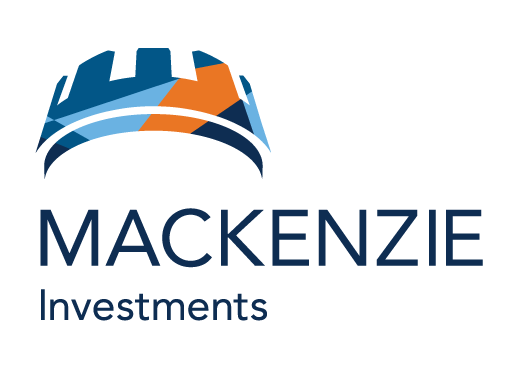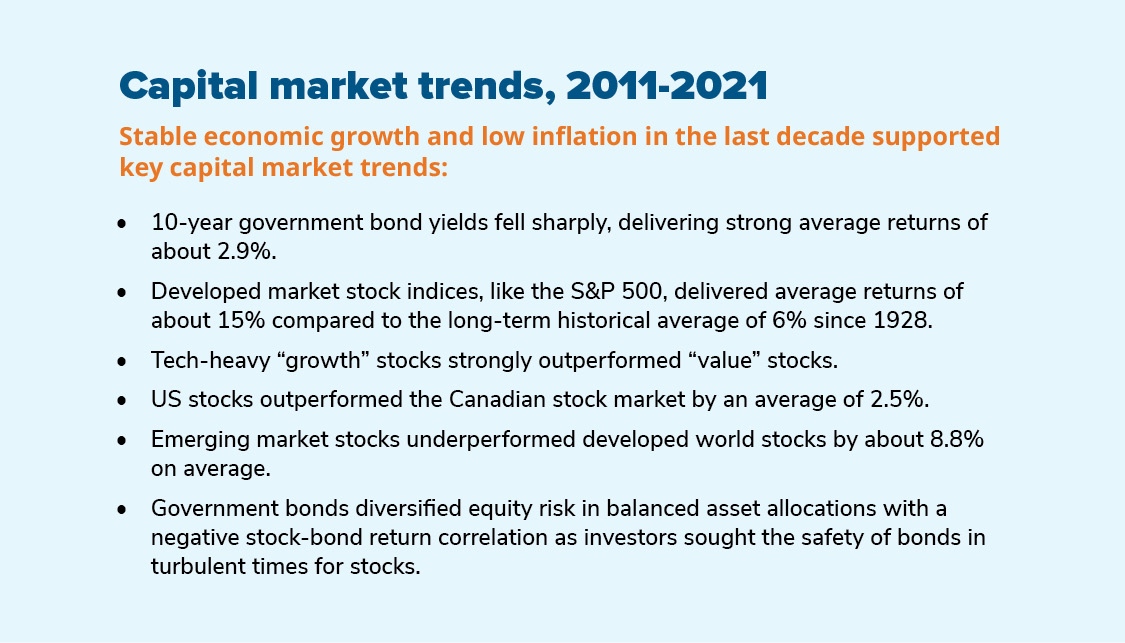Jun 1, 2022
A portfolio for uncertainty
Presented by:


The world has changed dramatically in a very short time. Most recently, a new era of geopolitical instability has increased market volatility.
This instability follows the sudden return of inflation, first seen in 2021 and continuing into 2022. To combat this risk, many central banks have begun raising policy rates from their historic lows, reversing a long-established trend.
In such an unfamiliar environment, investors could benefit from an investment process focused on a deep understanding of the complex macroeconomic and geopolitical landscape. Successfully navigating the future demands more than simple portfolio rebalancing. It demands a robust decision-making process.
There is no crystal ball
“Many possible scenarios exist for the next decade, but two broad potential outcomes stand out, and they involve different implications for investors,” says Todd Mattina, Chief Economist and Co-Lead of the Mackenzie Multi-Asset Strategies Team.
“Scenario one is moderate economic growth and inflation falling to central bank targets over several years, with solid equity and fixed income market returns. But this is not guaranteed. Scenario two sees central banks unable to tame inflation, which may remain high with slowing economic growth.”
These are two very different scenarios, with very different impacts on an investment portfolio. The challenge for investors is to ensure their portfolios are built around a resilient core that can handle this range of macroeconomic possibilities.
Mattina’s economic analysis informs the investment strategy of the team he co-leads with Nelson Arruda. With these two scenarios in mind, the Mackenzie Multi-Asset Strategies Team constructs portfolios that aim to address each identified risk. This is the process for the Mackenzie ETF Portfolios, a suite of well-diversified mutual funds built with exchange-traded funds (ETFs).
It’s time for portfolio reconstruction
Investors should note that key performance trends of the past decade might not persist.

“What worked in the past won’t necessarily work in the future,” says Arruda. “Each asset class has its own sensitivity to changes in economic growth, inflation and other economic drivers.”
Despite the uncertain environment, Arruda says it’s important to stay invested, avoid emotional decisions and balance risk through diversification.
Diversification has famously been described as the only “free lunch” in investing. In the past this could be achieved with a simple mix of stocks for growth and government bonds for stability and yield. But past interest rate trends have made this inadequate for many investors’ needs.
“Asset allocation is the most important decision that investors make, as this typically drives overall risk in a portfolio,” says Arruda. “A resilient, well-balanced portfolio requires a mix of assets that react differently to economic environments and can help investors reach their long-term financial goals.”
The active vs. passive myth
“There is no passive decision on asset mix or risk tolerance. Investors and their financial advisors need to decide that for themselves,” says Arruda.
These considerations form the basis of the Mackenzie ETF Portfolios. After determining the appropriate asset allocation, the Mackenzie Multi-Asset Strategies Team uses ETFs to gain cost-efficient exposure to each asset class.
Each portfolio is actively managed, allowing the team to navigate uncertain and shifting economic conditions, with a goal of adding return or reducing risk. Using ETFs complements this structure by providing exposure to specific asset classes, geographies or sectors to enhance the portfolio’s resilience.
ETFs also help keep the portfolios’ fees low, since ETFs that passively track an index are available at low cost.
Reconstructing the road ahead
The world appears to be at a crossroads as the economy and markets face one of the two drastically different scenarios outlined by Mattina.
Whichever scenario transpires, investors might be best served by greater diversification and an eye on fees. An uncertain future calls for portfolio reconstruction.
DISLCAIMER: Commissions, trailing commissions, management fees and expenses all may be associated with mutual fund investments. Please read the prospectus before investing. Mutual funds are not guaranteed, their values change frequently and past performance may not be repeated.
The content of this document (including facts, views, opinions, recommendations, descriptions of or references to, products or securities) is not to be used or construed as investment advice, as an offer to sell or the solicitation of an offer to buy, or an endorsement, recommendation or sponsorship of any entity or security cited. Although we endeavour to ensure its accuracy and completeness, we assume no responsibility for any reliance upon it.
This document may contain forward-looking information which reflect our or third party current expectations or forecasts of future events. Forward-looking information is inherently subject to, among other things, risks, uncertainties and assumptions that could cause actual results to differ materially from those expressed herein. These risks, uncertainties and assumptions include, without limitation, general economic, political and market factors, interest and foreign exchange rates, the volatility of equity and capital markets, business competition, technological change, changes in government regulations, changes in tax laws, unexpected judicial or regulatory proceedings and catastrophic events. Please consider these and other factors carefully and not place undue reliance on forward-looking information. The forward-looking information contained herein is current only as of March 1, 2022. There should be no expectation that such information will in all circumstances be updated, supplemented, or revised whether as a result of new information, changing circumstances, future events or otherwise.